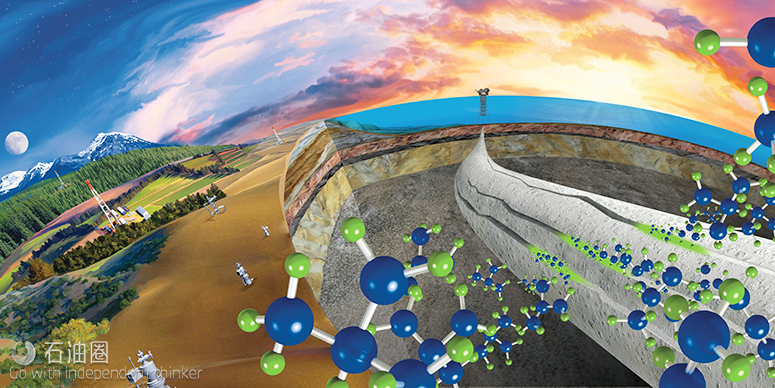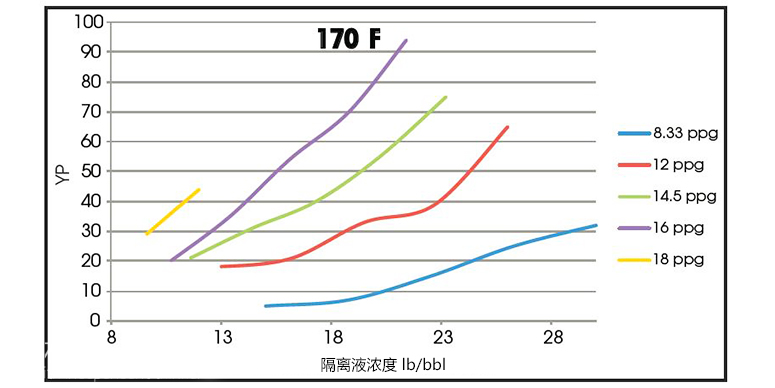Cement bond integrity and zonal isolation can be compromised when severe losses are encountered during cementing operations. When casing is landed in mechanically weak and/or depleted reservoirs, resultant narrow fracture gradient windows and higher cementing equivalent circulating densities (ECDs) can break down the formation. The combination of existing and induced losses invariably requires costly remedial cementing to ensure zonal isolation.
Cement spacers are critical to deliver full annular placement of uncontaminated cement slurries and an effective cement bond. However, in loss-prone reservoirs conventional spacers optimized for hole cleaning are unable to control losses. The losses-while-cementing issue has recently been addressed with the development of a high-temperature spacer with loss-prevention capabilities, incorporating a proprietary Wellbore Shielding (WBS) technology. The WBS cement spacer has a progressive rheological profile to clear the way for high-integrity cementing in the weakest formations, greatly reducing or eliminating remedial treatments.
The WBS spacer is specially formulated with the ultralow invasion WBS additive that lays down an impermeable seal across troublesome zones to restrict fluid and pressure invasion. Accordingly, the technology allows successful placement even with higher ECDs at casing setting depth, reducing restrictions on cement slurry density while also permitting full circulation to the programmed top of cement. The easily engineered WBS spacer fluid generates effective mud-to-slurry displacement and fluid separation while enhancing hole cleaning, which is particularly critical when cementing in horizontal wells where contaminated fluids tend to migrate to the low side of the hole.
The new-generation spacer and its predecessor have been used successfully in primary cementing applications worldwide, often in problematic reservoirs. For instance, an operator of a Red Sea exploration well recently spent more than a month drilling the 12¼-in. interval while working to manage losses. The operator elected to run the WBS cement spacer ahead of the slurry with minimal expectations for success. Yet returns were observed shortly after the spacer passed the problematic formation. Returns increased as the displacement continued, ultimately resulting in isolation of the loss zone without the need for remediation.
Losing cement height
Fundamentally, conventional spacers are designed to prevent cross-contamination of the drilling fluid and cement slurry, where inadequate separation adversely affects the set cement properties. Cement spacers also play a role in mud-to-slurry displacements by helping to ensure pure cement replaces all of the drilling fluid in the annular space from total depth to the planned top of cement.
Typical spacers are not designed to address pre-existing losses or induced losses. The risk of lost circulation is greatest once the heavier and thicker cement slurry enters the annulus, where steady increases in ECD are generated as the cement job progresses. Consequently, pumping cement without addressing lost circulation introduces risk that the required cement column height will not be achieved.
Remedies to address losses usually include mixing high concentrations of fibrous lost circulation materials (LCMs) in the spacer or directly into the cement system, which presents a number of operational issues. Alternately, multistage cementing tools may be used that not only increase cementing time and costs but also create the risk of a mechanical failure. Furthermore, if the pre-job computer simulation indicates cementing ECD would exceed the safe operating margin, typical alternative approaches include reducing the cement density or slowing the pump rate. Reducing the cement weight often leads to lower quality cement that can be more susceptible to contamination. Slowing the displacement rate decreases displacement efficiency.
All-in-one spacer
Advancing beyond the traditional spacer functions, the new-generation WBS spacer is specially formulated to allow cement circulation to the programmed setting depth in fragile and fractured formations.
The core of the technology is the uniquely engineered ultralow invasion additive that essentially deposits a thin but impermeable “shield” across a wide range of matrix pores and microfractures, thereby preventing or minimizing losses. Comprising a proprietary combination of polymers, solids and other materials, the nondamaging WBS additive creates an extremely low-permeability barrier, minimizing fluid and pressure invasion. The seal has no adverse impact on formation permeability, as evident in return permeabilities of 90% to 95%.
As confirmed in both the laboratory and field, the protective membrane can support a high-pressure differential, allowing cementing operations at increased ECD that otherwise would exceed the formation’s fracture gradient. The capacity to safely operate above the fracture gradient under downhole conditions minimizes the cement density limitations posed by narrow fracture gradients.
Laboratory testing also validated the temperature stability and improved compatibility of the WBS spacer. HP/ HT rheology tests at 16 lb/gal show the spacer maintaining stable properties above 163 ℃ (325 ℉). Compatible with all cement and drilling fluid types, the spacer also provides an effective medium to prevent the cement from becoming over-viscosified.
Engineering the desired YP throughout the cementing operations to optimize displacement, separation and hole cleaning efficiencies is relatively straightforward due to the progressive rheological profile with added spacer concentrations. The spacer can be mixed on the fly at up to 18 lb/ gal density, simplifying delivery of larger spacer volumes.
Case history 1
The first-generation WBS spacer system saved rig time by generating a single-stage cement job in Abu Dhabi, where offsets required a multistage cementation process. In one well, static losses of 81 bbl/min and 120 bbl/min dynamic losses were measured prior to cementing. Drilling fluid pills did not cure losses below 65 bbl/min static losses and 100 bbl/min dynamic losses. Using the WBS spacer system stopped losses and allowed cement returns to the surface.
Case history 2
Uncontrolled losses were encountered during the drilling phase on a geothermal well pad, resulting in a severe top of- cement shortfall. The operator used the WBS spacer system in tandem with a synergistic LCM to ensure a better cement job while reducing overall well costs. For the 20-in. casing job the number of top jobs reduced from an average of 11 to two, while the extra cement required to finish filling the annulus was reduced from 1,047 bbl to 138 bbl. Comparative analysis of the 133⁄8-in. cementing job demonstrated similar improvements.
The resulting cost savings was $329,500, and additional future savings might be generated during the life of the wellbore resulting from the better initial cement jobs achieved with the WBS spacer.


 石油圈
石油圈

